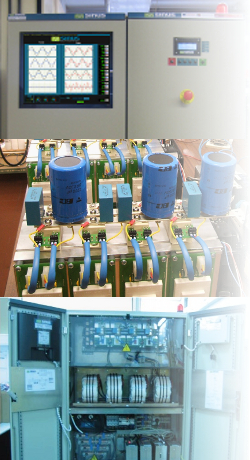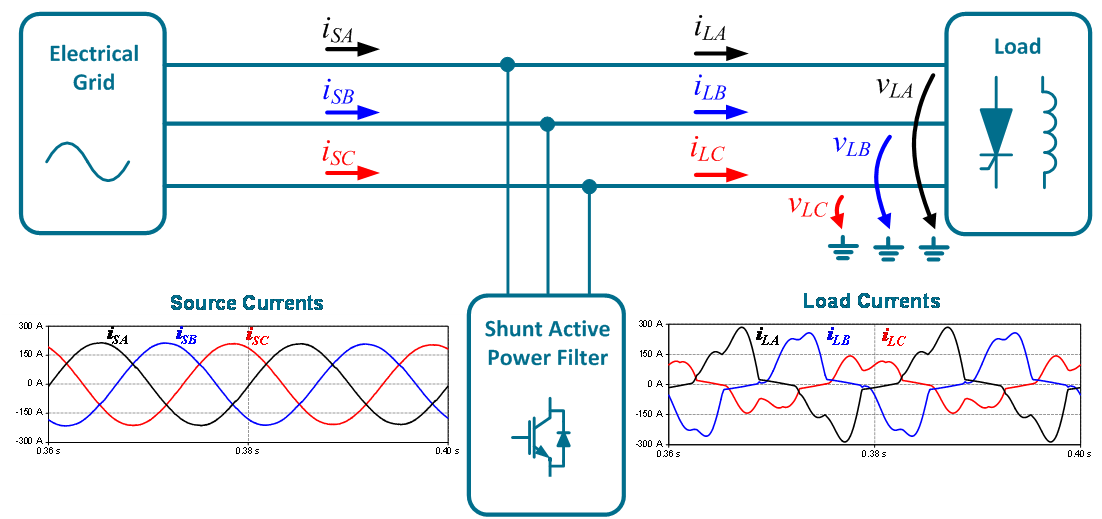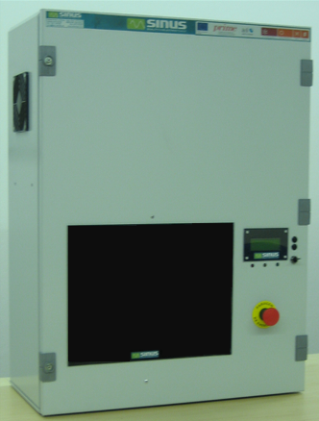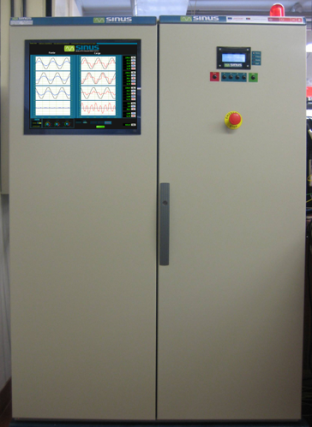
|
Shunt Active Power Filters
Shunt Active Power Filters are devices that mitigate Power Quality problems, more precisely the current problems of a particular electrical system. This equipment is connected in shunt with the load or set of loads, in which is desired to minimize the problems of power quality. These problems in the current can be low power factor, harmonics or unbalanced system. The Shunt Active Power Filter is able to compensate simultaneously all these problems.
The low power factor is a well-known and studied problem, representing increased costs in the use of electric power by consumers. The current unbalances occur in three-phase systems and result from different electric power consumption in the phases, current unbalances cause problems because it can bring excessively high neutral current values (in an extreme case can be higher than the phase currents). Moreover if the currents are unbalanced, the power supplied to the facility is not constant, which prejudices the electric power supplier. Finally harmonics are a recent type of problem, they have arisen due to the increasing use of electronic devices with nonlinear electric power consumption, this problem can origin distortion of the system voltages which can lead to malfunction or even destruction of loads more sensible to Power Quality problems. In addition to this, harmonics cause an increase of losses in the equipment and conductors.
The Group of Energy and Power Electronics (GEPE) of University of Minho, has developed and tested prototypes of an innovative Shunt Active Power Filter for both single-phase and three-phase systems. GEPE has been at the forefront in the development of Shunt Active Power Filters, more efficient, with lower size and cost, optimizing the used Power Electronics systems. This work in the area of Shunt Active Power Filters began with a large-scale project, the Sinus project. www.sinus-pq.dei.uminho.pt.
Principais características dos Filtros Ativos Paralelos
- Easy installation and commissioning equipment, without the need of previous studies about the place where will be connected. Once functioning, the Active Power Filter immediately compensates the current, making it sinusoidal and in phase with the voltage.
- Safe for the electrical grid, once it is shunt connected, and, when occurs an equipment malfunction, it shuts down automatically through a connector and a circuit-breaker, keeping itself isolated from the electrical installation.
- Automatic and instantaneous compensation of all harmonics and power factor. In case of load change, the Control System of the Power Active Filter recalculates the new compensation current values.
- Integrated Power Quality and Consumption Monitoring System. Shows the wave forms and RMS values of currents and voltage, as well as power factor values and total harmonic distortion (THD), on the load side (before compensation) and on the source side (after compensation). It can also be seen the individual harmonics, as well as the consumed power values. The Monitoring System can operate in a continuous registration mode, in where it detects interruption, sags and swells, RMS values during time, power consumption, etc.
- It can operate as an Interface System for Renewable Energy Sources, injecting the produced energy on the electrical grid simultaneously with the compensation of harmonics, power factor and unbalances. For that, it is necessary the use of a circuit which adapts the voltage levels of the renewable sources to the ones in the DC side of the Active Power Filter. In the case of utilization of Photovoltaic Solar Panels as energy source, that circuit as the also the function of optimize the production of energy by the panels, being named as MPPT (Maximum Power Point Tracker) circuit.

Technical features of the developed Single-Phase Shunt Active Power Filters
- Dynamic compensation (automatic and instantaneous) of all current harmonics until the 25th order.
- Dynamic power factor compensation to the unit (adjustable setting).
- Possibility of producing capacitive or inductive reactive power (adjustable setting).
- Possibility of compensating only harmonics or only power factor.
- Dynamic adaptation to load changes, with response time inferior to 20 ms.
- Does not present overload issues (limited by the Control System to the rated value of compensation current).
- Soft start (while connecting to the grid and starting compensation procedures).
- Power Inverter composed by IGBTs and Control System implemented in DSP (Digital Signal Processor).
- Does not use transformers for electrical grid connection.
- Automatic rearmament after electrical grid failure.
- Low acoustic noise operation.
- Red signalization light indicating the electrical grid connection.
- Integrated Power Quality and Consumption Monitoring System, with 17’’ TFT screen for easy locally visualization of information.
- Possibility of remote access to the Integrated Power Quality and Consumption Monitor System, through Ethernet or 3G board.


|







